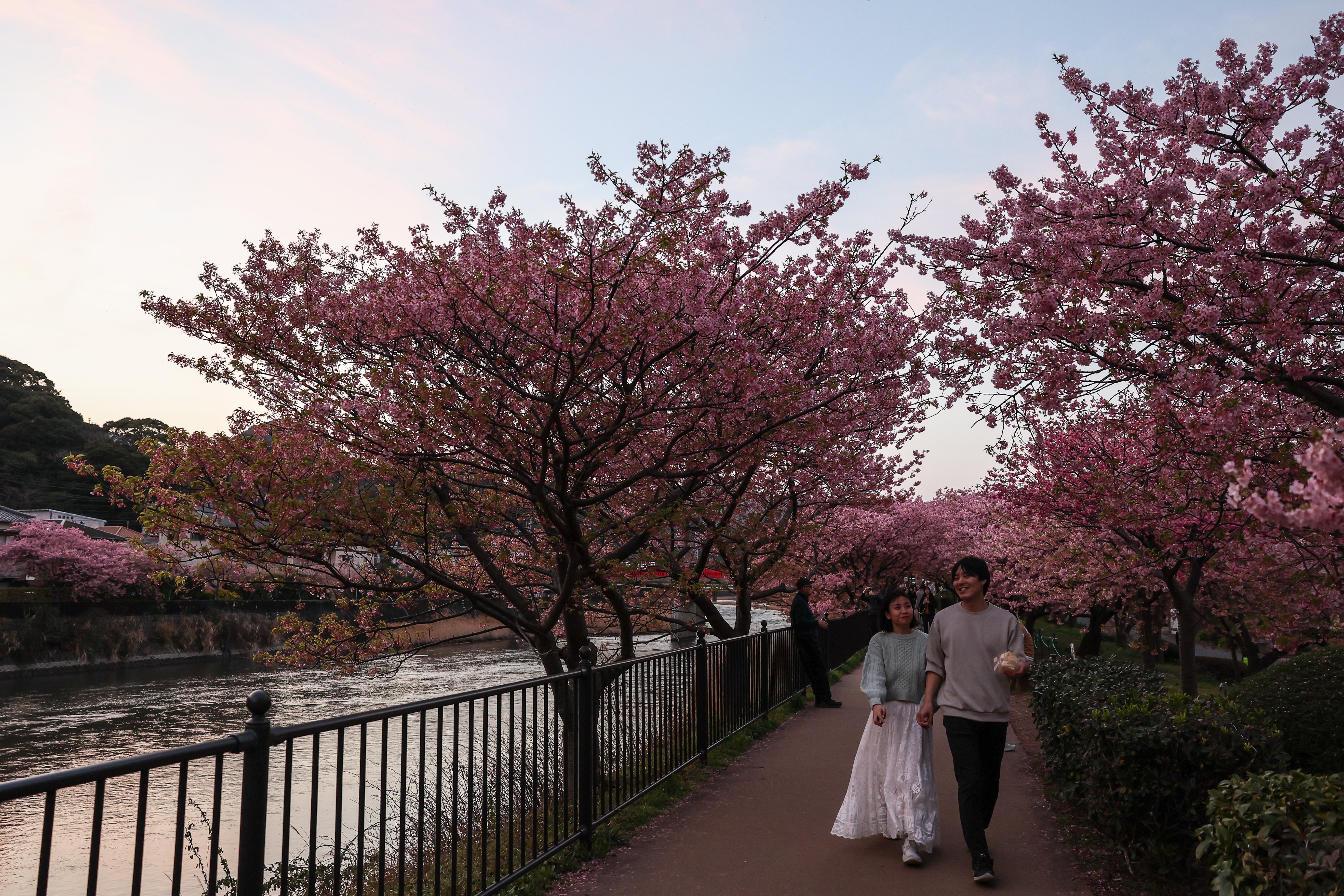Japan’s early bloom of cherry blossoms sparks concerns amid record heat
Videos from Kawazu show the flowers were in full bloom by mid-February
Your support helps us to tell the story
This election is still a dead heat, according to most polls. In a fight with such wafer-thin margins, we need reporters on the ground talking to the people Trump and Harris are courting. Your support allows us to keep sending journalists to the story.
The Independent is trusted by 27 million Americans from across the entire political spectrum every month. Unlike many other quality news outlets, we choose not to lock you out of our reporting and analysis with paywalls. But quality journalism must still be paid for.
Help us keep bring these critical stories to light. Your support makes all the difference.
Cherry blossoms, Japan’s symbol of spring, have started blooming earlier this year amid hotter winter temperatures in February.
Japan usually sees the peak cherry blossom season in March and April when the streets of its major cities are adorned by beautiful pink and white flowers, attracting millions of visitors.
Some flowers, like Kawazu blossoms, bloom earlier in the season, usually by late February.
But videos from Kawazu, a small town on the east coast of the Izu Peninsula after which the species is named, show the flowers were in full bloom by mid-February, according to Weather.com.
Streets in Kawazu are seen covered with pink flowers that appear to be in the peak of their season, with fears that the flowers will begin to deflower sooner, before the Cherry blossom festivals end.
The flowers in Tokyo are also expected to bloom early this year again after a mild winter and warm spring this year in Japan amid record-breaking temperatures around the world.
Climate crisis and urban warming have been impacting the flowering dates of cherry blossoms in Japan.
In 2023, the iconic blossoms appeared ten days earlier than usual and tied with an early record set in 2020 and 2021 for the earliest bloom date since the records began in 1950s.
The climate crisis and urban warming have pushed forward the “peak bloom” flowering period by 11 days, researchers from the Met Office in the United Kingdom and Osaka Metropolitan University in Japan said in a study in 2022.

In Japan, forecasts for cherry blossom bloom are an integral part of the country’s spring celebrations.
The government has set a standard for observing cherry blossom trees and has been forecasting the annual bloom since 1955.
According to the rules, once five or six flowers have opened on the branches of the tree, it’s considered to be blossoming. Once 80 per cent of the tree has flowered, it’s deemed to be in full bloom.
In 2023, the Tokyo tree that’s used for forecasting had 11 flowers by 14 March.
The season does not just hold cultural significance, but it’s also a major tourist attraction. An estimated 63 million people travel to Japan to see the cherry blossoms, spending around $2.7bn in the process, according to a 2019 estimate from Kansai University
Average winter temperatures in Japan have increased by several degrees since pre-industrial times, under the influence of both climate crisis and urban warming, scientists have observed.
Hundreds of monthly high-temperature records for February have been broken in Japan this year following several months of mild temperatures.
“This is the most extreme event in 150 years of Japanese climatic history,” climate expert Maximiliano Herrera, who keeps tabs on global weather records via social media, said, talking about 480 stations recording extreme February temperatures.
The milder winter in Japan comes amid a similar trend seen across the world. After 2023 was confirmed to be the hottest year ever, driven by heat generated from human-caused climate pollution and El Nino weather phenomenon, global average temperatures have remained higher in the first few weeks of 2024.

Join our commenting forum
Join thought-provoking conversations, follow other Independent readers and see their replies
Comments